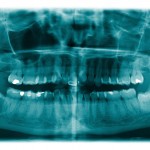
The risk of temporary inferior alveolar (IAN) damage from third molar extraction ranges from 0.26% to 8.4%, and up to 3.6% for permanent damage. Lingual nerve damage can vary from 0.1% to 22%. Coronectomy, the removal of the crown leaving to roots in place was introduced in 1989 with the aim of avoiding IAN damage. However, the incidence of failed coronectomies is reported to range from 2.3% to 38.3%.
The aim of this review was to estimate the incidence of damage to the inferior alveolar (IAN) and dental nerves in successful and unsuccessful coronectomies.
Methods
Searches were conducted in the Medline, Embase, Cochrane library, AMED (Allied and Complementary Medicine), BNI (British Nursing Index), CINAHL (Cumulative Index to Nursing and Allied Health Literature), HBE (Health Business Elite), HMIC (Health Management Information Consortium), and PsycINFO® databases. English language papers reporting on a minimum of 50 coronectomies with a least 6 months follow up were considered. Study quality and risk of bias was assessed.
Results
- 14 studies were included
- 2 RCTs, 8 prospective cohorts, 2 retrospective cohorts, 2 case-controlled studies.
- 3 studies were considered to be high quality,10 medium and 1 of low quality.
- 152 out of 2087 coronectomies failed (7%).
- Successful procedures had a low overall incidence of injury to the IAN (0.5%) and lingual nerve (0.05%).
- incidence IAN injury in failed coronectomies was 2.6%.
- incidence of permanent paraesthesia was 0.05% in successful coronectomies and 1.3% in failures.
- No permanent injury to the lingual nerve was reported.
- The most common causes of failure were mobility (36%, 55/152) and migration or exposure (33%, 50/152) of roots
Conclusions
The authors concluded: –
although coronectomy is a safe and reliable option for the removal of deeply impacted mandibular third molars, its success depends on both the patient and the technique used. The reported failure rate (7%) suggests that the development of complications is a threat to quality of life, and it is therefore essential to explain the risks to patients to ensure that consent is properly informed. The incidence of permanent injury to the IAN in failed coronectomies is lower than that for the extraction of mandibular third molars (1.3% and 3.6%, respectively).
Comments
The authors have conducted an extensive database search for studies to address this question. However, limited information is provided on the key elements of the systematic review process such as; search terms, selection processes, data abstraction and whether this was conducted independently and in duplicate.
A broad range of studies designs were included and an old RCT points based scoring system was used to assess study quality and risk of bias. The searches were also limited to English language papers which potentially excluded relevant studies. These factors should be taken into account when considering the findings.
Links
Primary Paper
Dalle Carbonare M, Zavattini A, Duncan M, Williams M, Moody A. Injury to the inferior alveolar and lingual nerves in successful and failed coronectomies: systematic review. Br J Oral Maxillofac Surg. 2017 Nov;55(9):892-898. doi:10.1016/j.bjoms.2017.09.006. Epub 2017 Oct 20. Review. PubMed PMID: 29061470.
Other references
Dental Elf – 19th Jun 2012
Coronectomy or total removal of third molars which approach give better outcomes

[…] Coronectomy – a safe option for deeply impacted mandibular third molars? […]